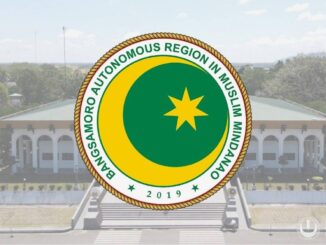
The government is pushing for the localization of disaster risk management (DRM) to reduce the risks brought about by calamities in the communities, the Department of Environment and Natural Resources (DENR) said Saturday.
During the Saturday news forum in Quezon City, Environment Assistant Secretary Rochelle Gamboa said that the participation of the local government units (LGUs) could lessen property damage and loss of life during disasters.
She said that the recently concluded Asia-Pacific Ministerial Conference on Disaster Risk Reduction (APMCDRR) 2024 recognized the role of LGUs in disaster risk mitigation and recovery.
In addition, she said that among the actionable initiatives identified by the APMCDRR was the strengthening of local policies to reduce disaster risks.
“Again, what (Environment) Secretary Maria Antonia Yulo-Loyzaga and United Nations Disaster Risk Reduction Head His Excellency Kamal Kishore said was that this battle will be won in the local levels, especially in cities which have the highest populations,” Gamboa said.
“So, the economic policies will have to be locally-based so that the plan should focus on the improvement of the Philippines’ ability to prepare, respond and recover from disasters,” he added.
The APMCDRR, which took place in the country from Oct. 14 until Oct. 18, has called for additional financial aid to high-risk areas not only for disaster response but also for prevention and recovery.
It also urged stakeholders to focus on vulnerable sectors of society such as women, youth, and persons with disabilities, putting more attention on management strategies regarding disasters, and building LGU capacity to respond to disasters.
In terms of financing, the Asian Development Bank and the World Bank are looking at ways to help LGUs work with their communities, particularly in coming up with financing schemes that would encourage local government officials to clear high-risk areas of informal settlers, Gamboa said.
This is in line with the Sendai Framework targeting to reduce per country disaster mortality of around 100,000 by 2030, she added.
In his speech during the APMCDRR last Monday, Oct. 14, Department of the Interior and Local Government (DILG) Secretary Jonvic Remulla said, as the vice chair for Disaster Preparedness of the National Disaster Risk Reduction and Management Council, he would continue enhancing the capacities of LGUs on disaster risk reduction management and climate change adaptation.
He said the DILG would continuously provide policy guidance, technical support and capacity interventions to LGUs to ensure that these are empowered and equipped to lead disaster risk reduction efforts in their respective jurisdictions.
Remulla reported that 87.87 percent of LGUs have already developed their local disaster risk reduction and management plans, and 71.05 percent of local governments nationwide have established their local climate change action plans.
He said 67.93 percent of LGUs have contingency plans, and 87.33 percent have approved community-based disaster risk reduction plans.
“We all need to act now. We have to act fast. We hope that through this Assembly, we will secure everyone’s commitment to plan and execute decisive and urgent local actions on disaster risk reduction and management more expediently,” Remulla said.





Be the first to comment